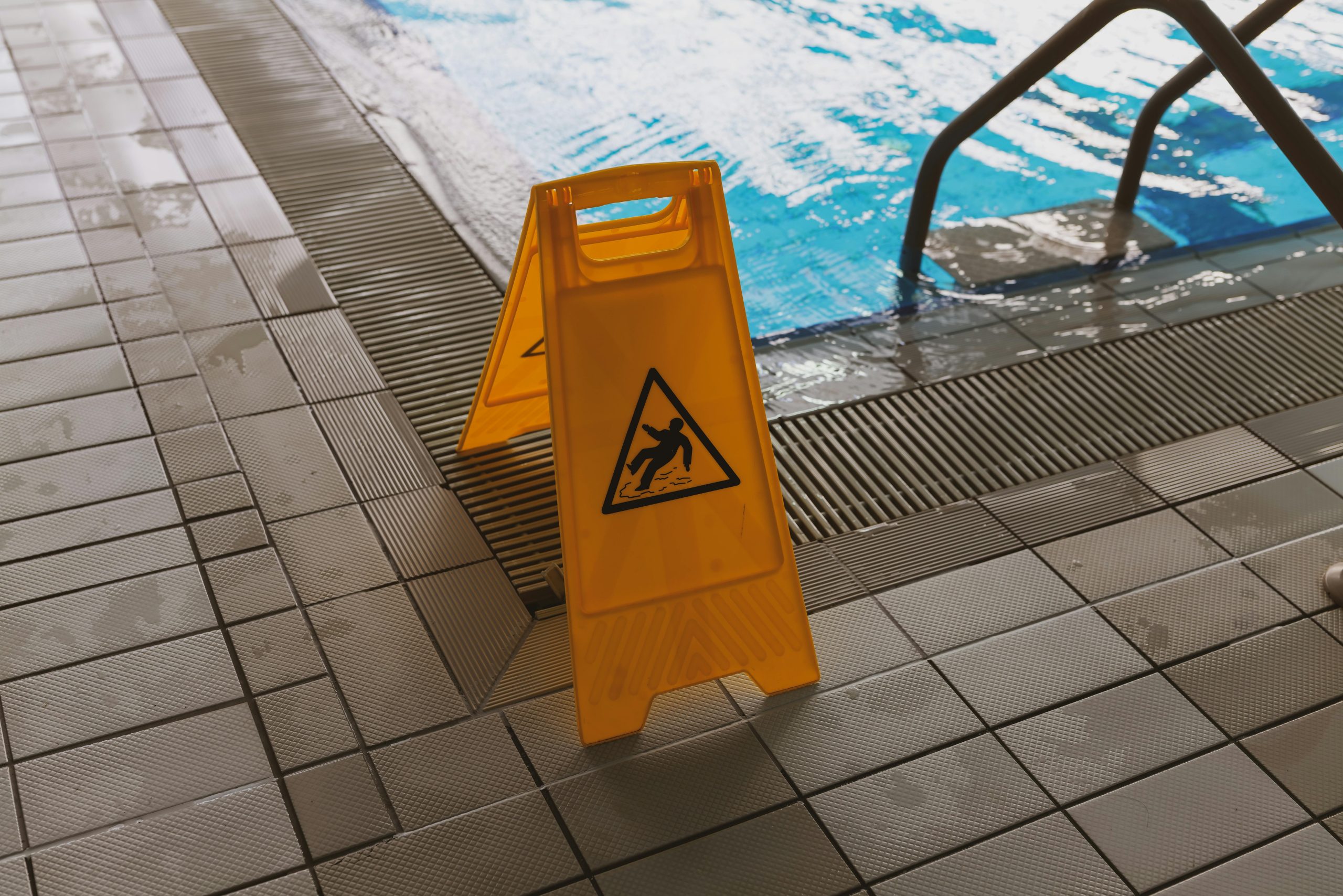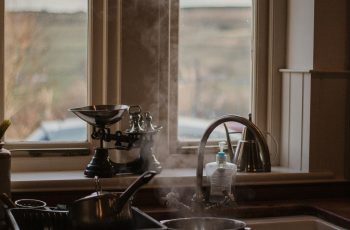Ad Blocker Detected
Our website is made possible by displaying online advertisements to our visitors. Please consider supporting us by disabling your ad blocker.
In this article, we will explore the topic of slow cooker safety and best practices, ensuring that you can enjoy delicious and comforting meals with peace of mind. We will discuss important tips and guidelines to follow when using a slow cooker, including proper handling and maintenance to prevent any potential hazards. Whether you are a seasoned slow cooker enthusiast or new to this versatile kitchen appliance, these safety precautions will help you make the most out of your cooking experience. So, let’s dive in and discover how to create mouthwatering dishes while keeping safety a top priority.

Choosing a Slow Cooker
Size and capacity
When choosing a slow cooker, it’s important to consider the size and capacity that will best suit your needs. The size of your slow cooker will depend on the number of servings you typically make and the amount of counter or storage space you have available. If you often cook for a large family or enjoy hosting gatherings, a larger capacity slow cooker would be a good option. On the other hand, if you mainly cook for yourself or a small household, a smaller capacity slow cooker might be more suitable.
Material
The material of the slow cooker can play a role in its performance and durability. Slow cookers are commonly made from either ceramic or metal. Ceramic slow cookers tend to be more popular as they distribute heat evenly and are easy to clean. However, metal slow cookers are also a good option as they offer faster cooking times and are more lightweight for transportation. Consider your cooking preferences and needs when choosing between ceramic and metal.
Temperature control
Having control over the temperature settings of your slow cooker is crucial for achieving the best results. Look for a slow cooker that offers adjustable temperature settings, typically low, medium, and high. This will allow you to have more control over the cooking process and ensure that your meals are cooked to perfection. Some advanced models even offer programmable timers and temperature probes for added convenience and precision.
Safety features
The safety of your slow cooker should be a top priority. Look for models that have features such as cool-touch handles and locking lids to prevent any accidents or burns. It’s also important to choose a slow cooker with a secure and tight-fitting lid to avoid any spills or leaks while cooking. Make sure to read reviews and check for any safety certifications to ensure that the slow cooker you choose meets all necessary safety standards.
Preparing the Slow Cooker
Cleaning the cooker
Before using your slow cooker for the first time, it’s important to thoroughly clean it. Use warm soapy water and a non-abrasive sponge or cloth to clean both the interior and exterior of the slow cooker. Rinse it well to remove any soap residue and dry it completely before use. Regularly cleaning your slow cooker after each use will help maintain its performance and prevent any buildup of food residue.
Inspecting for damage
Before each use, take a few moments to inspect your slow cooker for any signs of damage. Check for any cracks or chips in the ceramic liner or any dents or discoloration in the metal casing. Pay close attention to the lid and ensure that it fits securely and is intact. If you notice any damage, it’s best to refrain from using the slow cooker and contact the manufacturer for further instructions.
Placing it on a stable surface
Always place your slow cooker on a stable and heat-resistant surface. This will prevent any accidental spills or tipping while the cooker is in use. Avoid placing it near the edge of countertops or on uneven surfaces. It’s also important to keep the slow cooker away from any flammable materials, such as curtains or paper towels, as a safety precaution. Remember that the slow cooker generates heat during the cooking process, so proper placement is crucial for safety.
Using Slow Cooker Utensils
Choosing the right utensils
When it comes to using utensils with your slow cooker, it’s important to choose the right ones that are safe and suitable for use in high-heat environments. Opt for utensils made from heat-resistant materials such as silicone, nylon, or wooden. These materials are less likely to melt or warp when exposed to high temperatures for an extended period of time, ensuring that they won’t contaminate your food or damage the cooker.
Avoiding metal utensils
It’s best to avoid using metal utensils in your slow cooker, especially those with sharp edges. Metal utensils can potentially scratch the surface of your slow cooker and create an opportunity for bacteria to grow in those crevices. Additionally, using metal utensils can damage the non-stick coating of some slow cookers. Stick to non-metal utensils to ensure the longevity of your slow cooker and maintain food safety.
Using heat-resistant utensils
To avoid any mishaps or accidents, always use heat-resistant utensils when handling your slow cooker. Remember that the slow cooker generates a significant amount of heat, and using regular utensils that are not designed to withstand high temperatures can lead to burns or melting. Heat-resistant utensils are specifically designed to withstand high heat and are less likely to cause any harm when in contact with the hot surfaces of the slow cooker.
Prepping Ingredients
Properly washing fruits and vegetables
Before adding fruits and vegetables to your slow cooker, it’s essential to properly wash them to remove any dirt or bacteria. Rinse the produce under running water while gently rubbing the surface to ensure thorough cleaning. For firmer vegetables like potatoes or carrots, using a vegetable brush can help remove any stubborn dirt. By washing your produce properly, you can ensure that any contaminants are removed and that your meals are safe to consume.
Trimming excess fat from meats
When preparing meats for your slow cooker, it’s a good idea to trim excess fat before cooking. While some fat can add flavor, too much fat can result in greasy and unhealthy meals. Trimming off visible fat not only helps reduce the fat content of your dish, but it also prevents excessive grease from accumulating in your slow cooker, making it easier to clean. Remove any large chunks of fat and leave a thin layer for added flavor.
Cutting ingredients into equal sizes
To ensure even cooking, it’s important to cut your ingredients into equal sizes before adding them to the slow cooker. This helps ensure that the ingredients cook at the same rate, resulting in a more uniform and balanced dish. Smaller pieces will also cook faster, while larger ones may take longer, so consider the cooking time and adjust the size accordingly. Taking the time to cut your ingredients evenly will lead to better results and a more enjoyable meal.

Understanding Cooking Times and Temperatures
Following recipe instructions
When using a slow cooker, it’s crucial to follow the recipe instructions provided. Different recipes may require different cooking times and temperature settings to achieve the desired results. Pay close attention to the recommended cooking times and adjust accordingly based on the specific recipe you’re following. Making changes to the cooking time or temperature without proper knowledge can result in undercooked or overcooked meals.
Choosing the right heat setting
Most slow cookers offer different heat settings, typically low, medium, and high. The heat setting you choose will depend on the recipe and the desired cooking time. A low heat setting is perfect for recipes that require longer cooking times, allowing flavors to develop and ingredients to become tender. Medium heat is ideal for slightly shorter cooking times, while high heat is best for recipes that require faster cooking or for keeping dishes warm.
Cooking times for different ingredients
Different ingredients have different cooking times in a slow cooker. For example, tougher cuts of meat, like beef chuck or pork shoulder, benefit from longer cooking times to become tender. On the other hand, delicate vegetables like zucchini or green beans cook much faster and should be added closer to the end of the cooking process to avoid overcooking. Understanding the cooking times for various ingredients will help you plan your slow cooker meals more effectively and achieve the best results.
Safe Food Handling
Thawing ingredients safely
When using frozen ingredients in your slow cooker, it’s important to thaw them safely to avoid any potential foodborne illnesses. The safest way to thaw ingredients is by transferring them from the freezer to the refrigerator and allowing them to thaw slowly overnight. Alternatively, you can use the defrost setting on your microwave if you’re short on time. Avoid thawing ingredients at room temperature, as this can promote bacterial growth and compromise the safety of your food.
Avoiding cross-contamination
Cross-contamination occurs when bacteria from one food item spreads to another, potentially leading to foodborne illnesses. To avoid this, it’s essential to practice good food handling habits when using a slow cooker. Always use separate cutting boards and utensils for raw meats, poultry, and seafood to prevent any cross-contamination. Wash your hands thoroughly with warm soapy water before and after handling raw ingredients to minimize the risk of bacteria spreading.
Properly storing leftovers
If you have leftovers from your slow cooker meal, it’s important to store them properly to maintain their freshness and safety. Allow the leftovers to cool down to room temperature before transferring them to airtight containers or sealable plastic bags. Label the containers with the date and contents to keep track of their freshness. Store the leftovers in the refrigerator and consume them within 3-4 days. If you won’t be able to finish the leftovers in time, it’s best to freeze them for later consumption.

Monitoring the Cooking Process
Avoiding opening the lid frequently
As tempting as it may be to take a peek and check on the progress of your slow cooker meal, it’s best to avoid opening the lid frequently during the cooking process. Each time you remove the lid, heat escapes, and this can increase the overall cooking time and disrupt the steady temperature within the slow cooker. Instead, trust the recipe and set a timer to keep track of the cooking time. Only remove the lid when necessary, such as when adding ingredients or checking for doneness.
Checking for food doneness
To ensure that your slow cooker meal is cooked to perfection, it’s important to check for food doneness. Use a meat thermometer to check the internal temperature of meats to ensure they reach the appropriate safe temperature. Meats should reach a minimum internal temperature of at least 145°F (63°C) for most cuts, with higher temperatures required for poultry. Additionally, vegetables should be tender when pierced with a fork. If necessary, adjust the cooking time or heat setting accordingly.
Using a timer to track cooking time
To keep track of the cooking time accurately, it’s recommended to use a timer. Most slow cookers come with built-in timers, but you can also use a separate kitchen timer or your smartphone. Set the timer according to the recipe’s recommended cooking time to ensure that you don’t accidentally overcook or undercook your meal. A timer will also come in handy if you need to step away or attend to other tasks while your meal slowly cooks to perfection.
Dealing with Power Outages
Seeking alternative power sources
In the event of a power outage during the cooking process, it’s important to have alternatives in place to continue cooking your meal safely. If possible, have a backup power source like a generator or an uninterruptible power supply (UPS) to keep the slow cooker running. Additionally, gas-powered slow cookers are available as an alternative to electric ones, allowing you to continue cooking even without electricity. Being prepared for power outages will save your meal and ensure its safety.
Using thermal bags for insulation
If you encounter a power outage and don’t have a backup power source, thermal bags can help insulate your slow cooker and keep the food warm for an extended period. Simply transfer the slow cooker, with the lid tightly secured, into a thermal bag or wrap it with towels or blankets. This insulation will help retain the heat and slow down the cooling process, reducing the risk of bacterial growth. It’s important to minimize the opening of the slow cooker to conserve heat as much as possible.
Adjusting cooking time if necessary
During a power outage, if you’re unable to continue cooking immediately or if there’s a significant delay, it may be necessary to adjust the cooking time accordingly. Extend the cooking time once power is restored to ensure that the meal is thoroughly cooked and safe to eat. Keep in mind that it’s better to be cautious and cook the food for longer rather than risk serving undercooked food that can lead to foodborne illnesses. Use your best judgment and consider the specific recipe and ingredients.
Avoiding Common Mistakes
Overfilling the slow cooker
One common mistake when using a slow cooker is overfilling it. It’s important to leave enough space for the food to cook and allow proper circulation of heat. As a general rule, aim to fill the slow cooker no more than two-thirds full. This will ensure that the food is cooked evenly, without overcrowding the slow cooker. Overfilling can result in uneven cooking, longer cooking times, and potentially unsafe food temperatures.
Using too much liquid
While it may be tempting to add excessive amounts of liquid to your slow cooker, it’s best to use the recommended amount stated in the recipe. The slow cooking process retains moisture, and excessive liquid can dilute flavors and make the dish watery. Stick to the recipe’s guidelines, and if you find that your dish is too liquidy, you can remove the lid during the last hour of cooking to allow some of the liquid to evaporate and thicken the sauce.
Not following recipe instructions
To achieve the best results with your slow cooker, it’s important to follow recipe instructions carefully. Each recipe is designed with specific cooking times, temperature settings, and ingredient combinations to ensure the desired outcome. Deviating from the instructions can result in undercooked or overcooked meals. Pay attention to cooking times, temperature settings, and ingredient preparation methods to ensure that your slow cooker creations turn out delicious and safe to eat.
Cleaning and Storage
Cleaning the slow cooker after each use
Cleaning your slow cooker thoroughly after each use is essential for maintaining its performance and preventing any build-up of food residue. Once your slow cooker has cooled down, remove the ceramic liner and wash it with warm soapy water. Use a non-abrasive sponge or cloth to gently scrub away any stuck-on food. Be cautious when cleaning the heating element or base of the slow cooker, as it shouldn’t come in contact with water. Wipe it clean with a damp cloth or sponge.
Storing it properly
When your slow cooker is not in use, it’s important to store it properly to protect it and optimize its lifespan. Make sure to clean and dry all parts of the slow cooker before storing them. Store the slow cooker in a cool, dry place, away from direct sunlight or extreme temperature fluctuations. If possible, keep the original packaging for added protection. Avoid stacking heavy items on top of the slow cooker, as this can potentially damage its components.
Maintenance and troubleshooting tips
To ensure the longevity of your slow cooker and keep it in optimal condition, there are a few maintenance and troubleshooting tips to keep in mind. Regularly inspect the power cord for any signs of damage and replace it immediately if necessary. Check the slow cooker’s user manual for any specific maintenance instructions, such as descaling the heating element or replacing the rubber gasket. If you encounter any issues or malfunctions, refer to the troubleshooting section of the user manual or contact the manufacturer for assistance.

